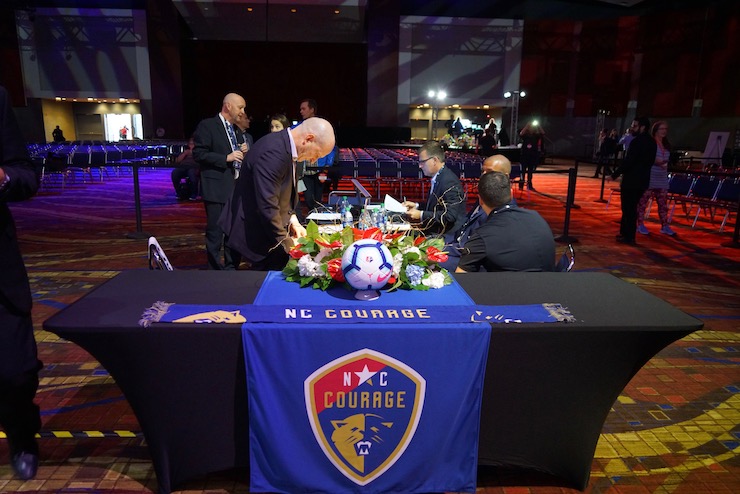Interview With Paul Riley on The U.S. Soccer Development Academy vs High School
Diane Scavuzzo of SoccerToday interviewed North Carolina Courage’s head coach Paul Riley prior to the 2019 NWSL College Draft in Chicago. Riley is one of the most revered coaches in women’s soccer and a leader in developing players.
The road to becoming a professional soccer player in America is always evolving. While the value of the MLS SuperDraft is in question, the importance of the NWSL Women’s College Draft is still evident although it is clear the game would benefit from more talented U17/18s making the move straight to the professional game. But what is the role of the U.S. Soccer DA and Colleges on preparing the next generation of female professionals?
NWSL Soccer News: The National Women’s Soccer League (NWSL) College Draft was held on Thursday, January 10, 2019, in Chicago with the top female players in college soccer celebrating the next steps of their careers.
Diane Scavuzzo caught up with North Carolina Courage head coach Paul Riley, NWSL 2018 Coach of the Year at the NWSL College Draft and discussed the big question:
Are we doing enough to develop our next World Cup winners?
In short playing with great players, training in a fantastic environment and competing against the best is the simple formula to get better
READ: NC COURAGE’S PAUL RILEY ON THE 2019 NWSL DRAFT & ISSUE IN COLLEGE SOCCER
The biggest controversy in elite soccer today is over the U.S. Soccer Development Academy’s strong preference that their players not participate in High School soccer. While this has existed on the Boys side of the DA with minimal resistance, there is overwhelming pressure on the Girls side to allow participation in High School’s soccer programs.
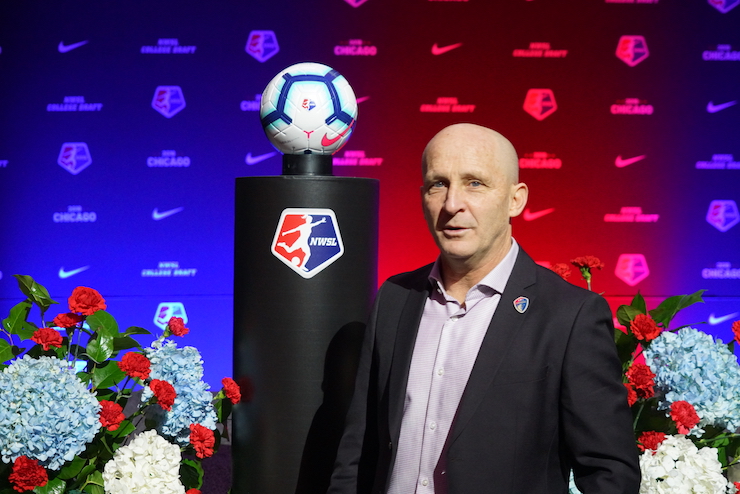
Diane Scavuzzo: What do you think of the U.S. Soccer Development Academy (DA) for Girls and ECNL?
Paul Riley: Well, I have teams in DA program and our youth soccer club also plays in the ECNL.
I like the U.S. Soccer Development Academy (DA) program for the four practices and one game a week. That’s the way it should be.
It’s like a professional team and that’s how we prepare. The ECNL has three practices and two games a week. I don’t like the three-two model. I prefer the four-one model.
We need to come together between the two groups and put all the best clubs in one area. Clubs are now splinted between the DA and ECNL.
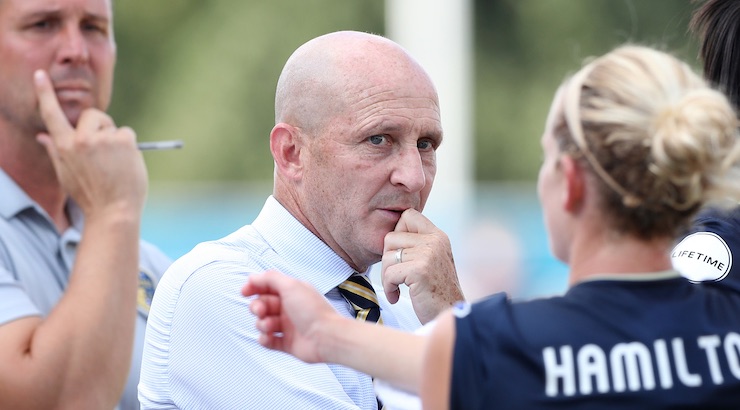
A lot of politics are involved, obviously and nobody wants to give up a bit of turf but there has to be a compromise.
What is best — for the players — is to compromise.
The DA needs to be adaptive with a new approach to high school.
The boys coming out of DA have the chance to go straight to MLS with homegrown players becoming more and more normal.
In the girls game, it’s very rare a 17-year-old makes one of the NWSL teams. We are about 10 years behind MLS.
Therefore it’s all well and good talking about developing World Class players but we need to be realistic that 99.9% of female players are going to college, not the pro league. So we need a detailed plan to provide our players with every opportunity we can to grow their game.
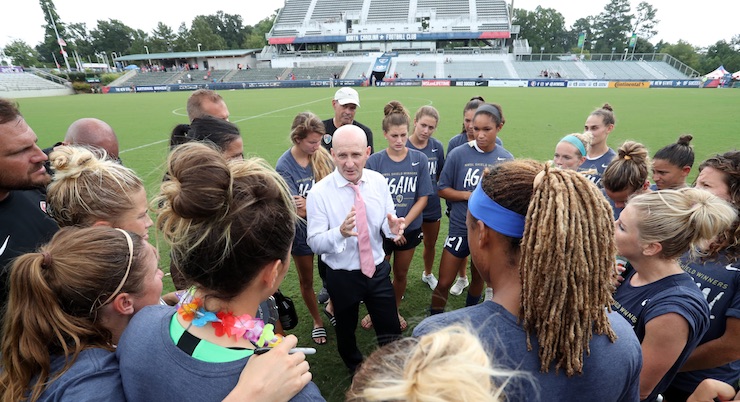
By being adaptive, the DA will be able to bring all the top players back to one place.
The best competitive environment is where we will grow better players.
I think the DA needs to let the clubs periodize their players with high school being part of that periodization. Maybe it’s no high school training on Saturdays and Mondays during the 7 week High School soccer season and players cannot play three High School games per week.
I think we have enough time before High School starts in New York to play 4-6 games —which allows DA to maintain the most important element of four practices to one game once the High School season finishes.
The 7 week High School season is not the reason our youth national teams aren’t as good as we want or expect. So, in my opinion, let’s use the tool as a positive way to improve players. Maybe the benefit of High School soccer is the value of playing a different position, or for developing new leadership experiences or for advantages gained from an understanding of social and communication skills.
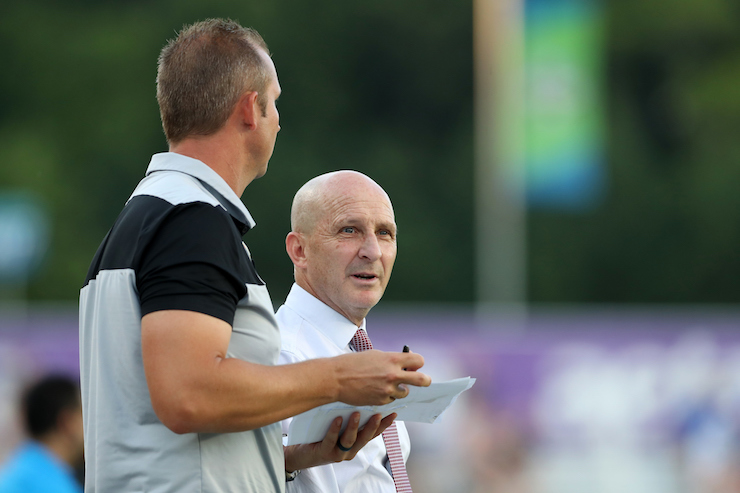
We need a new identification program, similar to the ODP model, which will allow us to get all the best players back together again.
Only the DA can facilitate this — and this, combined with all the best clubs in one league, would guarantee it is the most competitive league, with elite player identification and individualized periodization plans for every player designed by the clubs themselves.
Use of GPS technology, wellness apps. activation protocols, match analysis and the improvements in the coaching education will be important elements in the continued development of our sport and our players.
The DA must adapt its view on High School soccer if we are to bring all the best players and clubs back together.
It is vital and it’s time to get around the table and put together a future forward plan to ensure our women’s game maintains its status as the world’s best.
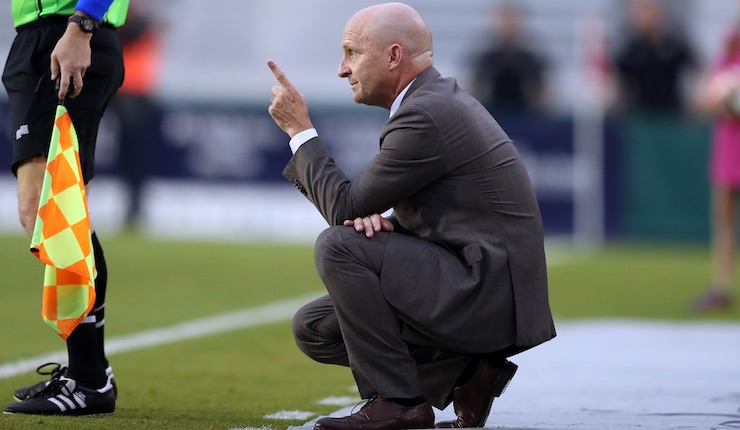 Diane Scavuzzo: Would you want to compromise on the schedule?
Diane Scavuzzo: Would you want to compromise on the schedule?
Paul Riley: No, I wouldn’t compromise on the four practices to one game model. I feel like that is something we need to have. I think they get better in practices and not in games.
READ: NC COURAGE’S PAUL RILEY ON BEING ON TOP — DON’T SET GOALS, JUST WANT STELLAR EFFORT
Diane Scavuzzo: What do you think about players being able to play high school soccer?
Paul Riley: I think this is important because otherwise, the clubs are going to continue to be splinted if we don’t tweak the issue of high school soccer. I’ve got some ideas on how to reach a compromise.
Diane Scavuzzo: In simple terms, what is the value of high school soccer?
Paul Riley: Socialization. Leadership. While I think it’s not great for the top players, for the next group of players, it is really good. They get to become focal points. Maybe they play out of position, but they get to be a leader.
The negative about high school ball is that some players play at good high schools and some don’t.
The question should really be who wants to train full time and who doesn’t. And that is a decision for the player and her coach.

